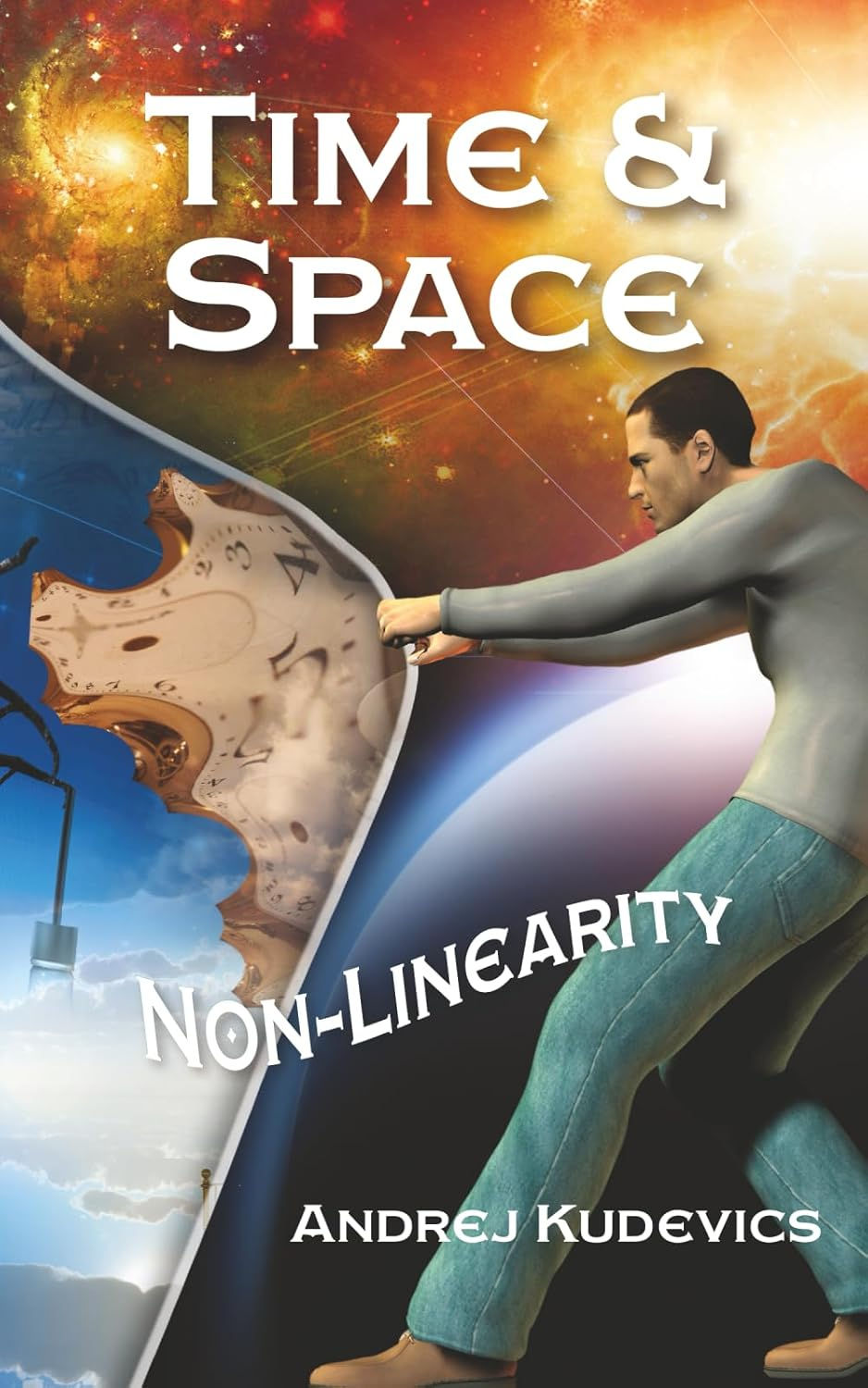Rethinking our hardwired assumptions about reality: a review of Time and Space: Non-Linearity
- Maverick Independent Book Reviews
- Aug 7
- 3 min read
Time and Space: Non-Linearity
Author: Andrej Kudevics
Self-published, 979-8284211069, $10.99

______________________________________________________________________________
Time and Space: Non-Linearity by Andrej Kudevics is a stream-of-consciousness essay exploring the idea that reality may exist in ways fundamentally different from how we perceive it. Kudevics argues that time and space are not linear but instead exist in a sphere. Within this sphere, the past, present, and future coexist, uniting what linearity divides. Kudevics claims that once humans learn to tap into the sphere and step outside their “linear minds,” we could experience a monumental shift in human consciousness.
Kudevics asks, “What is time and space for people? Everybody knows time and space. It is the same as asking what water is for fish” (p. 3). While most people assume they inherently understand time and space, the reality is that no one truly grasps how, when, or why things happen. We view the world only through a linear lens, which limits our awareness of other possibilities and keeps us in a constant state of separation. As Kudevics explains, “So what is the above-mentioned consciousness of separation or duality as I see it? It is when each individual sees himself as a separate being placed into a hostile world where he/she has to fight for almost everything they want to get from this outer world and they have to work hard by the sweat of their brow. They don’t see any other way, cannot even imagine that another way exists” (p. 6).
Through an example of an unfolded map, Kudevics illustrates how linearity distorts reality. If presented with an unfolded map of the world, it would be simple to make calculations on the distances and times between two points on the map. He writes, “But roll this unfolded map into a ball and where is the whole world now? We don’t have it any longer. It still exists but it is locked inside the ball. It is not visible for us. We didn’t destroy this world or blow it up; we just rolled it into the ball. The space where this world once existed is now compressed into a point and doesn’t have an extension in space and time. It is now existing as information” (p. 4).
Drawing on his experiences as a deep-sea captain, Kudevics began to question the very nature of reality, particularly in relation to time and space. He furthers this argument by sharing personal examples of time-space jumps, moments when he shifts from one reality to another in an instant. Through these examples, he suggests that reality seems fixed only because we have been conditioned to see it through a single lens.
Kudevics demonstrates an awareness that his concepts may challenge readers’ beliefs, yet he invites them to suspend their disbelief, hoping they will ultimately become more receptive to the notion of nonlinearity. The ultimate goal of his essay is to help readers expand their consciousness, as he argues that our limited, linear mindsets keep us trapped in cycles of fear, separation, and control. These linear mindsets are ingrained in us from an early age by governments and societal structures that operate only through linearity.
Kudevics advocates breaking free from these linear systems and adopting a spherical mind rooted in unity and love. As he writes, “Through a frame of mind and consciousness, people can bring high energies into the energy field of planet and it will improve everything in the world of form. As it was said, without vision, people perish” (pp. 22–23). He further emphasizes that “the core of our being is formless consciousness” (p. 25), encouraging readers to embrace this deeper, wholesome state of connection.
Kudevics’ unconventional ideas are reflected not just in his arguments but also in the structure of his writing. He intentionally crafts his writing style to mirror the essay’s content, using long, flowing paragraphs and run-on sentences that deliberately resist linear organization. He acknowledges this choice in the foreword, where he states, “It also may seem like some thoughts and ideas in this book are disjointed from each other, incomplete, and that is true as well. No thoughts or ideas can be completed once and forever. The end for someone is the beginning for another.” Upon an initial reading, the writing may seem hard to follow; however, as one becomes engrossed in the themes of linearity versus nonlinearity, the style itself begins to lead the reader toward an understanding of spherical consciousness.
Though philosophical, the essay remains deeply and surprisingly human. Readers might expect a lecture filled with scientific theories and factual data, but Kudevics writes from the heart, urging them to recognize themselves as spiritual beings with the potential to transcend societal linearity. Time and Space: Non-Linearity challenges readers to rethink their hardwired assumptions about reality and sparks a conversation about the possibilities of a more connected, conscious way of being.
Review by Britain Powers






Comments